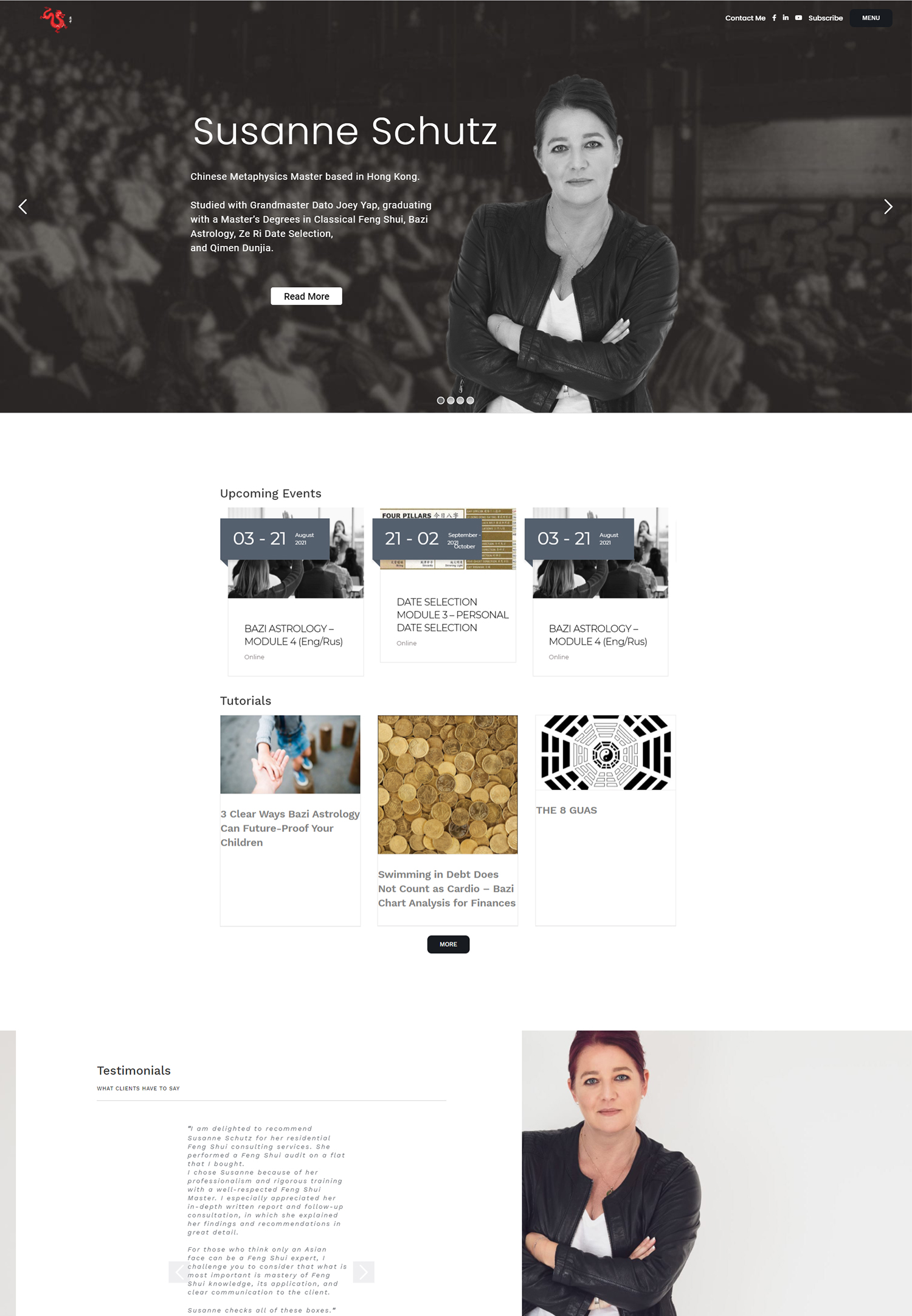In today’s digital age, social media platforms like Facebook have become powerful tools for businesses to reach and engage with their target audience. However, simply driving traffic to your website or Facebook page is not enough. To truly maximize the potential of your Facebook traffic, you need to have effective landing pages in place.
A landing page is a standalone web page that is specifically designed to convert visitors into leads or customers. It is where your Facebook traffic “lands” after clicking on a link or advertisement. Landing pages are crucial because they provide a focused and tailored experience for your visitors, guiding them towards taking a desired action such as making a purchase, signing up for a newsletter, or filling out a form.
Statistics have shown that landing pages are highly effective in generating leads and increasing conversions. According to HubSpot, companies with 10 to 15 landing pages see a 55% increase in leads compared to those with less than 10 landing pages. Additionally, a study by MarketingSherpa found that 68% of B2B businesses use landing pages to generate leads for future conversion.
Defining Your Landing Page Goals: What Do You Want to Achieve?
Before creating a landing page, it is important to clearly define your goals and objectives. What do you want to achieve with your landing page? Are you looking to generate leads, increase sales, promote a new product or service, or simply provide valuable information to your audience?
Setting specific and measurable goals for your landing page will help you stay focused and determine the success of your efforts. For example, if your goal is to generate leads, you can set a target number of sign-ups or form submissions that you want to achieve within a certain time frame.
By defining your goals upfront, you can tailor your landing page content and design to align with those objectives. This will ensure that every element of your landing page is working towards achieving your desired outcome.
Crafting a Compelling Headline: Grabbing Attention and Engaging Your Audience
The headline of your landing page is the first thing that visitors will see, and it plays a crucial role in grabbing their attention and engaging them. A compelling headline should be clear, concise, and relevant to the offer or message you are promoting.
To write attention-grabbing headlines, consider using power words that evoke emotion or curiosity. For example, words like “discover,” “exclusive,” “free,” or “limited time” can create a sense of urgency and entice visitors to learn more.
Additionally, it is important to highlight the value or benefit that visitors will receive by taking action on your landing page. Whether it’s saving time, money, or solving a problem, clearly communicate the value proposition in your headline to capture the interest of your audience.
Here are some examples of effective headlines for landing pages:
– “Unlock the Secrets to Successful Social Media Marketing”
– “Get 50% Off Your First Purchase – Limited Time Offer!”
– “Join Our Exclusive Community and Get Access to Insider Tips”
Creating a Clear Call-to-Action: Encouraging Visitors to Take Action
A call-to-action (CTA) is a crucial element of any landing page as it guides visitors towards taking a specific action. Whether it’s making a purchase, signing up for a newsletter, or downloading a free resource, your CTA should be clear, prominent, and compelling.
The placement of your CTA is also important. It should be above the fold, meaning it should be visible without scrolling down the page. This ensures that visitors can easily find and engage with your CTA without any friction.
When designing your CTA button, use contrasting colors that stand out from the rest of the page to draw attention. Additionally, use action-oriented language that tells visitors exactly what they need to do. For example, instead of using generic phrases like “Submit” or “Click Here,” use more specific and persuasive language like “Get Started Now” or “Claim Your Free Trial.”
Designing an Eye-Catching Layout: Making Your Landing Page Visually Appealing
In addition to compelling headlines and clear CTAs, the overall design and layout of your landing page play a crucial role in capturing and retaining the attention of your visitors. A visually appealing landing page not only looks professional but also helps to establish trust and credibility with your audience.
When designing your landing page layout, consider using visual elements such as high-quality images, videos, or infographics to enhance the overall aesthetics. However, be mindful not to overload your page with too many visuals, as it can distract visitors from the main message or call-to-action.
It is also important to ensure that your landing page is easy to navigate and understand. Use clear headings, subheadings, and bullet points to break up the text and make it scannable. Additionally, use ample white space to create a clean and organized layout that is visually appealing.
Streamlining Your Landing Page Copy: Communicating Your Message Effectively
The copy on your landing page should be clear, concise, and persuasive. Visitors should be able to quickly understand what you are offering and why they should take action.
To write effective copy for your landing page, focus on the benefits and value that visitors will receive by taking action. Use bullet points or short paragraphs to highlight the key features or advantages of your offer.
Additionally, use language that speaks directly to your target audience. Understand their pain points, desires, and motivations, and tailor your copy accordingly. By addressing their specific needs and wants, you can create a stronger connection with your audience and increase the likelihood of conversion.
Adding Social Proof: Building Trust and Credibility with Testimonials and Reviews
Social proof is a powerful tool in building trust and credibility with your audience. By showcasing testimonials, reviews, or case studies from satisfied customers, you can provide evidence that your product or service delivers on its promises.
When incorporating social proof into your landing page, use real testimonials from actual customers. Include their name, photo, and any relevant details that add credibility. Additionally, consider using video testimonials or customer success stories to make the social proof more engaging and impactful.
It is also important to strategically place social proof on your landing page. Position it near your call-to-action or in a prominent location where visitors are likely to see it. This will help to reinforce the value and benefits of your offer and increase the trustworthiness of your landing page.
Optimizing for Mobile: Ensuring Your Landing Page is Mobile-Friendly
With the increasing use of smartphones and tablets, it is crucial to ensure that your landing page is optimized for mobile devices. According to Statista, mobile devices accounted for 52.2% of all website traffic worldwide in 2018.
To optimize your landing page for mobile, consider using a responsive design that automatically adjusts the layout and content based on the screen size. This ensures that your landing page looks and functions properly on any device.
Additionally, make sure that your landing page loads quickly on mobile devices. Slow loading times can lead to high bounce rates and lower conversions. Compress images, minimize code, and use caching techniques to improve the loading speed of your landing page.
Testing and Analyzing Your Landing Pages: Measuring Success and Making Improvements
Testing and analyzing your landing pages is crucial for measuring success and making improvements over time. A/B testing is a common method used to compare two versions of a landing page to determine which one performs better.
When conducting A/B testing, make sure to test only one element at a time. This could be the headline, CTA button color, layout, or any other element that you want to optimize. By isolating variables, you can accurately measure the impact of each change and make data-driven decisions.
In addition to A/B testing, it is important to analyze the data and metrics associated with your landing pages. Tools like Google Analytics can provide valuable insights into visitor behavior, conversion rates, and other key performance indicators. Use this data to identify areas of improvement and make iterative changes to your landing pages.
Putting it All Together for Maximum Conversions
In conclusion, landing pages are a crucial component of any successful Facebook marketing strategy. By understanding the importance of each element – from compelling headlines and clear CTAs to visually appealing layouts and persuasive copy – you can create landing pages that convert visitors into leads or customers.
Remember to define your goals upfront and tailor your landing page content and design to align with those objectives. Craft attention-grabbing headlines, create clear and prominent CTAs, design visually appealing layouts, streamline your copy, add social proof, optimize for mobile devices, and continuously test and analyze your landing pages for maximum conversions.
By implementing these best practices and continuously refining your landing pages based on data-driven insights, you can maximize the effectiveness of your Facebook traffic and achieve your desired outcomes.
If you’re looking to optimize your landing pages for Facebook traffic, you may also be interested in learning about effective strategies for ranking and increasing sales. Check out this informative article on “Ranking and Sales: How to Boost Your Website’s Performance” to discover valuable insights and techniques that can help you improve your website’s visibility and drive more conversions.
FAQs
What is a landing page?
A landing page is a web page that is specifically designed to convert visitors into leads or customers. It is usually created for a specific marketing or advertising campaign.
Why is it important to optimize landing pages for Facebook traffic?
Facebook is one of the largest social media platforms with over 2 billion active users. Optimizing landing pages for Facebook traffic can help businesses reach a wider audience and increase conversions.
What are some tips for optimizing landing pages for Facebook traffic?
Some tips for optimizing landing pages for Facebook traffic include keeping the messaging consistent with the ad, using clear and concise language, using high-quality images and videos, and making the call-to-action prominent.
How can businesses track the performance of their landing pages?
Businesses can track the performance of their landing pages by using tools such as Google Analytics or Facebook Pixel. These tools can provide insights into metrics such as bounce rate, conversion rate, and engagement.
What are some common mistakes to avoid when optimizing landing pages for Facebook traffic?
Some common mistakes to avoid when optimizing landing pages for Facebook traffic include using too much text, having a slow loading time, not having a clear call-to-action, and not testing different variations of the landing page.





























